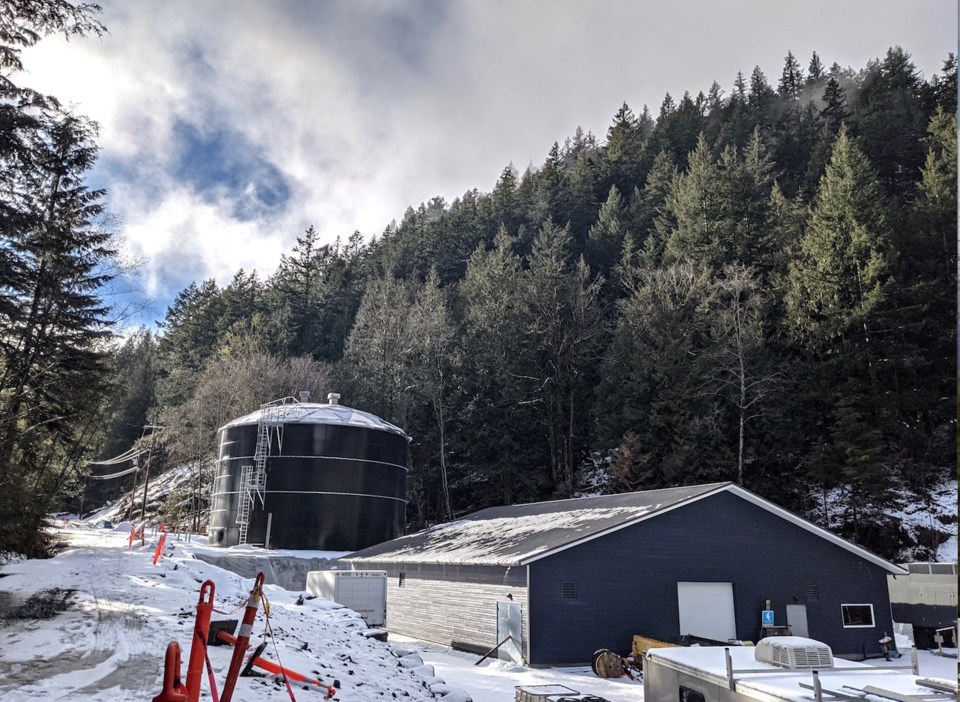While the municipal property tax increase in 2021 is 6.6 per cent, fees for municipally managed water and sewage will also see a substantial increase this year.
Of the seven municipally owned water systems, Bowen Bay, Bluewater Park, King Edward Bay, and Tunstall Bay water systems will see a 20 per cent rise in funds collected. Hood Point will see a 10 per cent rise and in Eagle Cliff and Cove Bay – it’s complicated.
Water systems operate outside of the general BIM budget – each district funding its own upkeep and replacement. Each tax season, the users pay into reserves (“Think of it like a savings account” says BIM’s chief financial officer Raj Hayre) and BIM pulls from those reserves to run and fix the systems.
“When we take a look at the work that needs to be done over the next five years, whether it’s replacement of pipes or water tanks or other major equipment within those systems, the reserve balances are not adequate to pay for that,” says Hayre.
Most of the water systems have a high flat rate applied to all connected properties and then further fees if a residence uses extra water (the amount of water differs district to district). The rate rises this year will directly feed reserves, indicated Hayre.
On the west side of the island, Tunstall Bay needs a water tank replacement, and BIM is looking at how to address the interconnected issues of Bowen Bay, Bluewater Park and King Edward Bay (recent reports suggest there’s sufficient water supply but the infrastructure challenges are great).
BIM has tried to keep the west side rates harmonized in recent years, says Hayre. “That’s a challenging thing in itself because those water systems are of varying ages, varying quality.”
For this year, the triad of Bowen Bay, King Edward Bay and Bluewater Park will see a flat rate of $960 (up from $800) and Tunstall Bay will see a flat rate of $980 (up from $815).
On the east side of the island, Hood Point, the one system with relatively healthy reserves, will see its flat rate rise to $800 (up from $710).
Eagle Cliff is a bit different – it has both a parcel tax and a water rate. It also faces system replacement costs in the millions in coming years (and the possibility of connecting into the Cove Bay system).
Eagle Cliff’s water rate is tiered so users who use less pay less (for those using under 50 gallons a day, the 2021 rate is an unchanged $525. For those using between 201 and 225 gallons a day, the rate is rising to $950.) The 2021 rates will rise in the upper tiers but the lowest ones will remain the same.
Above its user rates, Eagle Cliff also applies a parcel tax to feed its reserves. This year, that parcel tax is rising for the first time since 2008: from $240 to $370.
Now Cove Bay is a different kettle of fish. Its user rates won’t rise in 2021 – it’ll still be a flat rate of $780. However, in constructing the Cove Bay Water Treatment Plant, the system has taken on significant debt (a combined $3.9 million in debt). To pay for debt servicing, BIM is applying a parcel tax that could affect not only connected properties but unconnected properties in the local service area (the idea being that they could at some point connect to the system). Given the complexity of the Cove units (Belterra has dozens of water connections while many businesses in the Cove have a single connection as does the new apartment building across from the museum) how the parcel tax will be applied is still getting figured out, says Hayre. If the parcel tax were to be applied as a flat fee, it would come out to $369 per water connection.
Then there’s the Snug Cove Sewer System. From the 100-odd users of the sewer system, BIM is looking for an 18 per cent increase in revenue. The system is looking at significant upgrades in coming years, estimated at more than $7.5 million.



